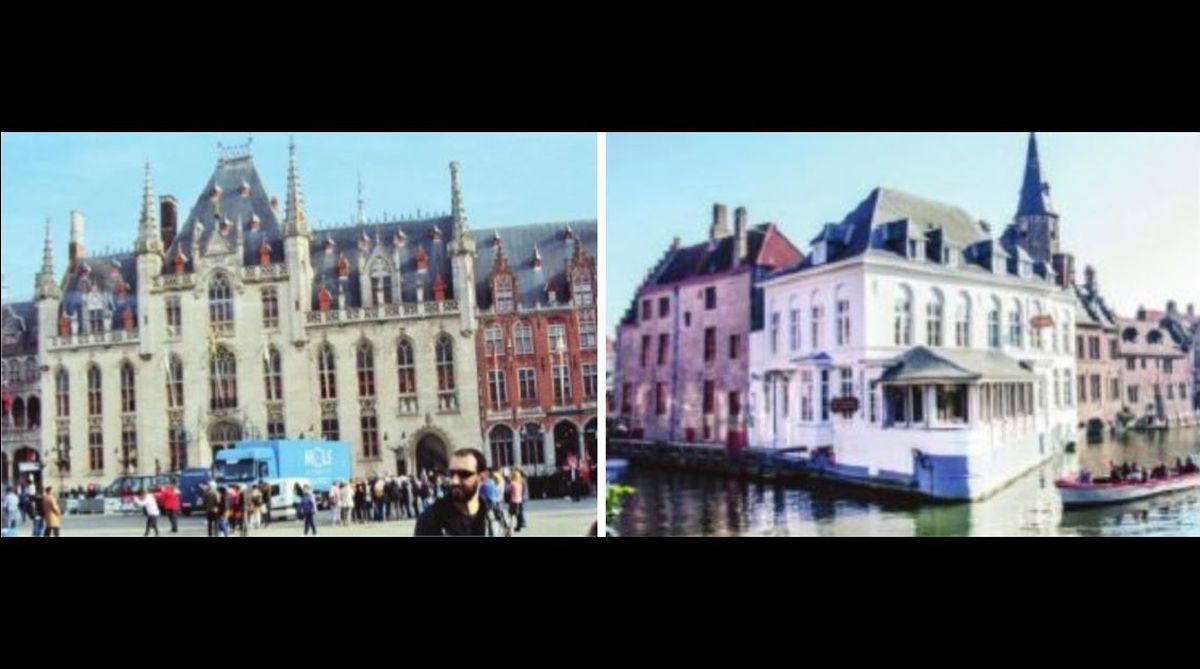Looking for a romantic destination with a medieval historic charm to rejuvenate yourself? Be it the solitary footloose traveller, or the newlywed couple, this quaint Belgian town has an answer to most of your needs.
With picturesque squares bounded by antiquated residencies, neat cobblestoned alleyways running alongside scenic canals, a string of chocolate shops selling delicious homemade Belgian chocolates, Bruges offers a lot more than several conventional sought-after destinations in Europe.
Even if it is not your main destination, for any tourist visiting Belgium it is extremely difficult to resist the lure of this wonderful medieval town of Bruges. A short train journey from Brussels Central station would take one to this fascinating town.
The vibrant city centre or the market square, surrounded by colourful houses, serves as a testimony to the city’s rich ancient tradition. Riding on the horse-drawn carriages through the cobbled lanes and bylanes of the city, one’s mind is bound to fuse the old world charm with the amenities of the present day.
Steeped in history, the initial cradle of the present-day city was a conglomeration of a number of brooks and watercourses that joined in the river Reie.
Even as far back as the Roman times, this region was well known for its maritime activities, a fact testified by the unearthing of the relics of a couple of seafaring ships belonging to the third and fourth centuries. However, the city received its name ‘Bruges’, several centuries later-the word being a derivative of the old-German word ‘brugj’ which means ‘a place for anchorage’.
Initially referred to as Bruggas, Brvccia or Brvggas, according to other opinions, the name of the city was derived from brugga, the Old Dutch form for bridge. The emerging significance of Bruges ensued in it becoming the main fortified habitation of the counts of Flanders, so that from the 11th century onwards the city was not only a thriving trading metropolis, but also a base of significant administrative authority.
In course of the 12th century, the advent of the new shipping canal of the Zwinsaw Bruges emerges as one of the significant commercial centres of North-west Europe. Interestingly, the steady flow of commerce saw the emergence of world’s first ever stock exchange (‘Beurs’ in Dutch) in Bruges.
Under the patronage of the Van der Beurse family Bruges prospered as a commercial hub. Against all odds of the medieval times, Bruges grew steadfastly and prospered as a thriving commercial seat. In the mid-fourteenth century, the city had a thriving population. The success continued for three successive centuries.
Around the fifteenth century, the Burgundian dukes reconstructed and extended their abode in Bruges and the manufacture and trade of luxury items touched new heights. Eminent artists such as Jan van Eyck and Hans Memling-the great Flemish primitives-found their creative inspiration here.
The fine arts flourished, and in addition to wonderful churches and unique ‘nation houses’, the town hall was also completed. Tourists can admire their masterpieces in the Groeninge Museum and the Saint John’s Hospital.
Bruges gained its position in the tourist map in the latter part of the nineteenth century under the patronage of the affluent British and French visitors. In ‘Bruges la Morte (1892)’ Georges Rodenbach fittingly portrayed Bruges as a rather somnolent, yet as a particularly enigmatic place.
The photographs contained within the book invited readers to explore. With the renewed interest of travellers, the city was provided with a new harbour christened Zeebrugge.
Withstanding the German attacks during the two world wars, in the latter part of the twentieth century, the city experienced a rebirth, as huge influx of tourism paralleled renovation and restoration work of ancient architectural structures of Bruges. With the gradual growth of international tourism, Bruges earned the distinction of being the European Capital of Culture in 2002.
At the advent of the twentieth century it already had an association to promote tourism: ‘Bruges Forward: Society to Improve Tourism’. The deep lure of Bruges prompted Unesco to include the medieval city centre to its World Heritage list. A boat trip down the canals helps the tourist to discover its hidden charms.
Rooted in a tragic folklore, The Minnemeer or the Lake of Love is a major attraction for most tourists, commemorating the romance between Mina and her warrior lover Stromberg. Subsequent to the tragic demise of Mina, Stromberg, it is believed, buried her below the lake. With the hope of renewal of everlasting love, today, love-struck couples flock to offer their pilgrimage.












